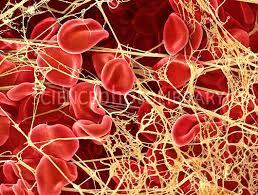
Norwegian researchers just reported that the anticoagulant drug warfarin may have another important health benefit in addition to its traditional role— reducing the risk of cancer. Their report was published in JAMA Internal Medicine.
Millions of people around the world take warfarin — a drug that reduces the ability of blood to clot by interfering with vitamin K-requiring clotting factors. It has saved many lives by preventing the formation of clots that could travel to the brain and cause strokes or to the heart where they could cause heart attacks. People at high risk for clots include those who have had heart valves replaced or repaired or those with atrial fibrillation.
These researchers, led by Dr. Gry S. Haaland from the University of Bergen in Norway, used data from the Norwegian National Registry, the Norwegian Prescription Database and the Cancer Registry of Norway. They collected data on over 1.2 million adults born between 1924 and 1954 and observed them for any cancer diagnosis between 2006 and 2012.
Of the people observed, about 93,000 (7.4 percent), used warfarin. These individuals were mostly men and had a mean age of 70 years.
Data analysis revealed that about 9 percent of warfarin users received a cancer diagnosis, compared to 11 percent of the non-users. The most common type of cancers diagnosed were prostate, lung, colon, and breast. When the investigators looked at all cancer sites combined, there was a significantly lower incidence rate ratio (IRR) for the warfarin group compared to non-users. When they examined the data for the most prevalent 4 cancer diagnoses, they also found a significantly lower IRR for prostate, female breast cancer, and lung cancer.
When they analyzed data from the people using warfarin for arrhythmias (e.g., atrial fibrillation), the risks of cancer were even lower than they were for all the warfarin users.
The authors suggested that warfarin acts to prevent tumor formation by inhibition of AXL receptor signaling, which blocks “malignant traits of aggressive carcinoma cells and enhances natural antitumor natural killer cell activity.” Further, they note that the doses of warfarin needed or this anti-tumor activity are low enough not to affect the clotting process. In their discussion, they also note ”AXL signaling suppresses antitumor immunity. Hence, the observed association between warfarin use and lower cancer incidence is likely due in part to an enhanced antitumor immune surveillance of early cancer.”
Whether these results can be replicated in other populations remains to be determined, however, the fact that a plausible biological mechanism has been shown to work in mouse models strengthens the hypothesis. If this hypothesis holds up, it might lead to an important means of reducing the risk of cancers in people with family histories that suggest they are at increased risk.
It’s not unknown for a drug used for one diagnosis to later be found to be useful in the treatment of another. For example, thalidomide, used to prevent morning sickness in pregnant women (until its teratogenic activity was discovered) was recently found to be useful in treating leprosy; sildenafil was originally developed to treat angina, but has found its most popular use as Viagra to treat erectile dysfunction. The study described here might just be another such case.



